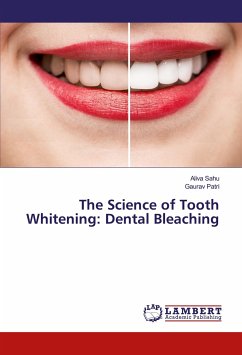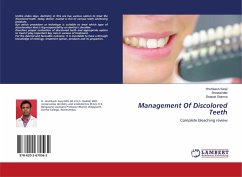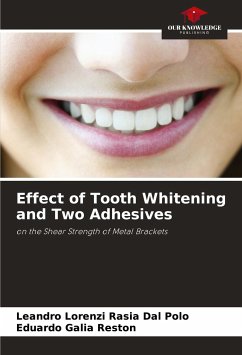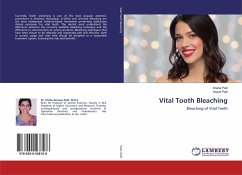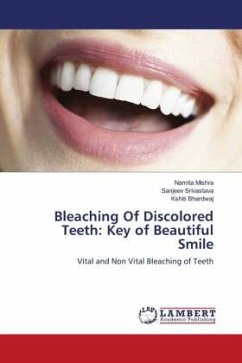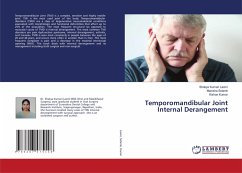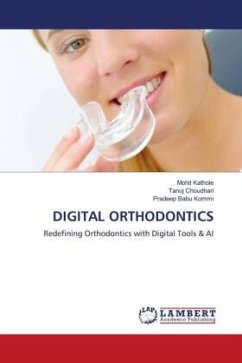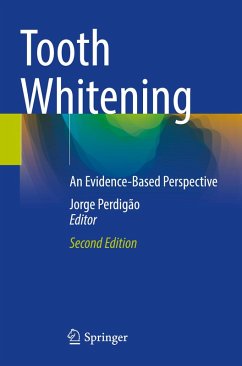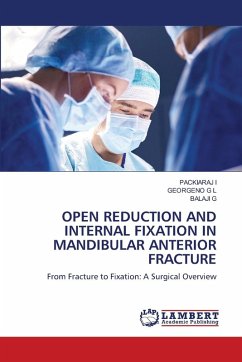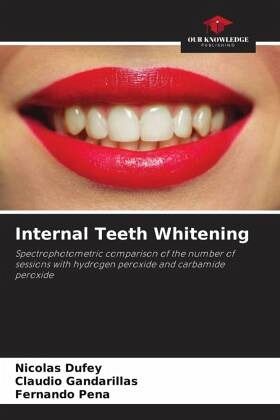
Internal Teeth Whitening
Spectrophotometric comparison of the number of sessions with hydrogen peroxide and carbamide peroxide
Versandkostenfrei!
Versandfertig in 6-10 Tagen
36,99 €
inkl. MwSt.

PAYBACK Punkte
18 °P sammeln!
The aim of the present work was to compare spectrophotometrically the number of sessions for an effective color change with 100% carbamide peroxide, 37% and 35% hydrogen peroxide, through the Walking Bleach technique. This was an experimental study, in vitro, in parallel, with blind in the measurement of the effect and in the data analysis. Eighty-eight premolars extracted for orthodontic indication were used. These were endodontically treated and artificially pigmented with chromogens derived from blood decomposition products. They were randomly divided into 4 groups of 22 teeth (one group fo...
The aim of the present work was to compare spectrophotometrically the number of sessions for an effective color change with 100% carbamide peroxide, 37% and 35% hydrogen peroxide, through the Walking Bleach technique. This was an experimental study, in vitro, in parallel, with blind in the measurement of the effect and in the data analysis. Eighty-eight premolars extracted for orthodontic indication were used. These were endodontically treated and artificially pigmented with chromogens derived from blood decomposition products. They were randomly divided into 4 groups of 22 teeth (one group for each bleaching agent, plus a control group with distilled water). The treatment regimen for each group was 4 sessions with a separation of 4 days between each one. The baseline and post-treatment color was recorded using the Vita Easyshade V dental spectrophotometer, with which the colors were recorded in CIE L_a_b_ color space. The values of the total color variation (SD) between the initial parameters and the different evaluation times were subsequently calculated.



